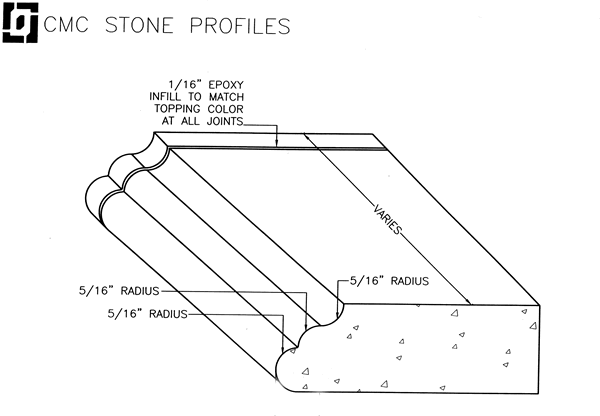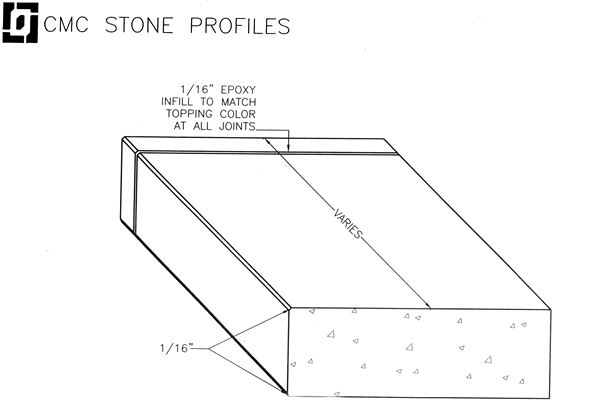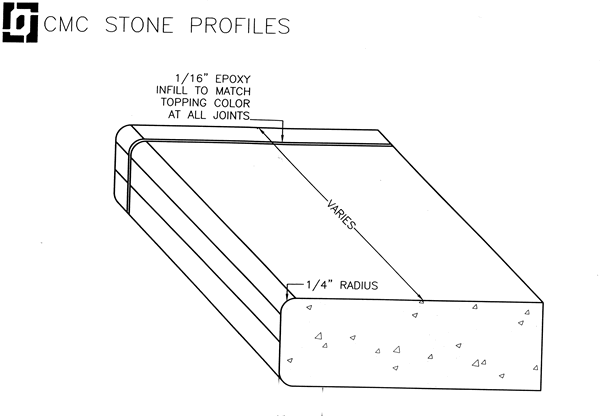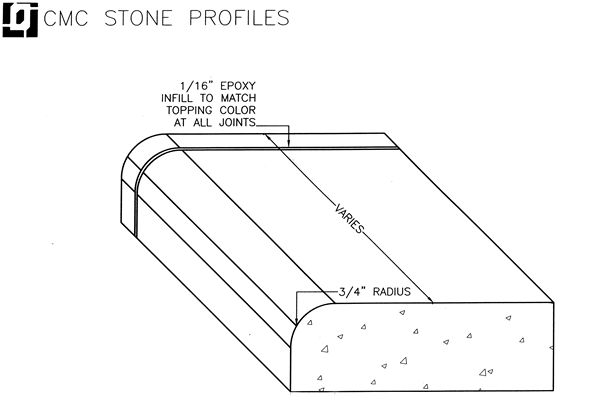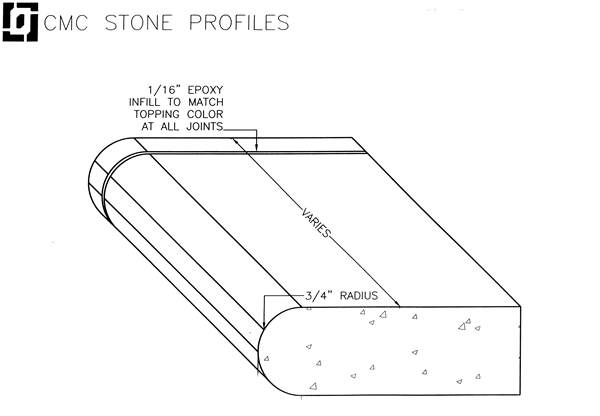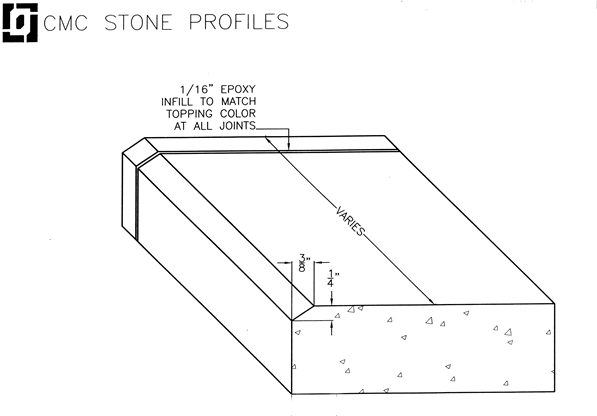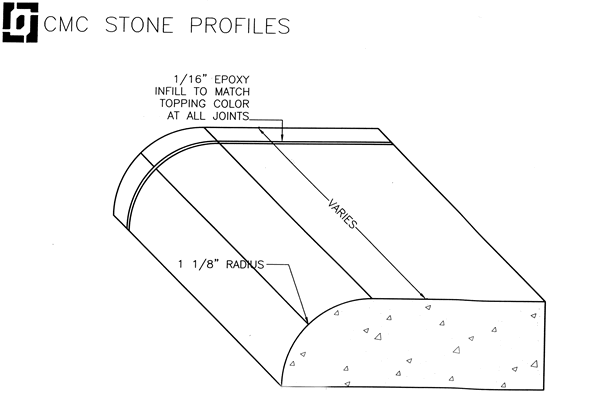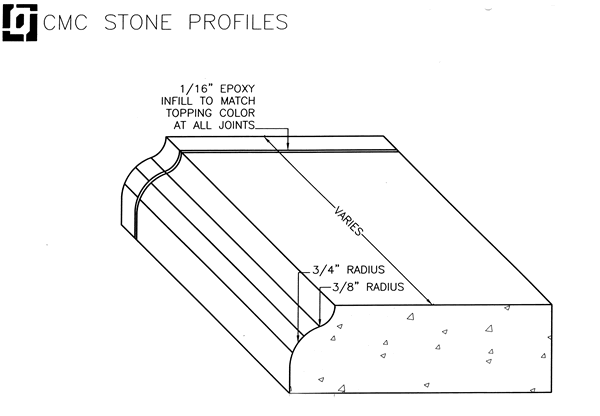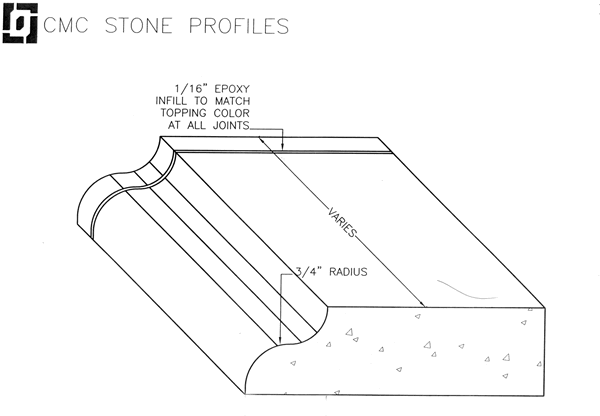Frequently Asked Questions: Granite
Question: What affects pricing of granite and marble countertops???
Answer: There are several variables that affect the pricing of granite and marble countertops. The material is priced by the square foot and these costs are dependent on the product's standard availability and the origin of material. Additional costs, such as cooktop or sink cutouts, fabrication costs, edge profile and special requests are priced separately.
Question: Does granite or marble chip or scratch?
Answer: Granite is a very dense material and under normal conditions it is chip and scratch resistant. However, we do not recommend a straight edge polish for countertops, especially around a sink because pots, pans, and other heavy objects may chip the sharp edge of a straight edge finish. Several other edge options are available that will look beautiful and reduce the chance of chipping. Marble countertop can be chipped and scratched under normal use and therefore, should be used in low traffic areas and should always be treated like a piece of fine wood.
Question: Can I cut on my granite countertop?
Answer: Yes, granite is very durable. However, we do suggest using a cutting board. Granite is comprised of many elements some softer and some harder, which may be subject to knife damage. Think of it as a car: if you abuse it, it will show.
Question: My little sample of granite has pits on the surface - will I have these on my granite countertops?
Answer: Granite, which is crystalline in structure, always has tiny pits - spaces between the various mineral crystals. They are more noticeable in some stones. You don't usually notice them on a larger piece because the overall appearance is polished and mirror-like but they are there! Granite countertops sometimes have natural fissures as well, which may look like cracks, but are not structural defects and are a naturally occurring result of the immense heat and pressure which formed the granite millions of years ago. These characteristics are part of the natural beauty of stone and will not impair the function or durability of the material.
Question: What is honed granite?
Answer: Strictly speaking, granite is called "honed" when the polishing process is halted just before a reflective shiny surface is achieved. This gives a softer, matte appearance to the stone. Honed surfaces require more maintenance than polished stones and they will show smudge marks created by numerous liquids including oil from your hands.
Question: What is flamed granite?
Answer: Granite is flamed by applying blowtorch-strength heat to the surface of the stone. This causes the surface to melt and some of the crystals to shatter, leaving a highly textured surface which is ideal for exterior paving or wet areas for non-slipperiness.
Question: Can granite countertops be damaged?
Answer: Granite can be damaged. It is a natural stone subject to cracking or breaking when forcefully abused. Because of its crystalline structure, it can chip if subjected to sharp hard objects. Unsealed, granite countertops can absorb stains, such as oil or red wine, which can ultimately cause dark spots or discoloration. Heat from pots and pans or burning liquids may affect granite countertops under extreme conditions. We always recommend using a trivet for pots and pans.
Question: Why is it a good choice to have a GRANITE countertop for the kitchen?
Answer: Granite is a very hard stone that′s formed at very high temperatures deep in the earth. Typically, granite is polished to make it more user friendly. When properly sealed, granite is more resistant to staining, etching and bacteria growth.
Question: What is Granite and What it is usually used for?
Answer: The term "granite" is used to cover a group of related stones, all of which have their origin deep in the earth′s molten mantle. As this extremely hot liquid material rises and cools, it forms a crystalline, granular structure, hence the term granite. Granite and other granite-like stones are formed of very hard minerals such as quartz, feldspar and mica, which are fused together into a very hard stone ideal for kitchen countertops. Granite is commonly used for countertops. It can also be used in tile applications for walls and floors, furniture pieces, fireplace surrounds, columns, steps, thresholds or windowsills. It is suitable for both residential and commercial applications. Granite adds a designer touch to interiors, each piece is truly unique. Granite has become more affordable thanks to fabrication technology and is typically competitive to solid surface alternatives.
Question: Do I have to have seams and will I see them?
Answer: It depends. We bid all of our jobs with common sense and your wallet in mind. We use the least amount of seams with the best slab yield as possible. We also have to take into consideration the ease of installation. It may cost more but we can accomodate most requests if it is physically possible. You will see and feel seams in stone and engineered stone. Usually, it is a very fine line and hardly noticeable. Keep in mind that stone with significant movement (veining pattern) will show seams more prominently.
Question: Do I need to support my granite where it overhangs my cabinets?
Answer: Probably. Some granite would be fine up to 10" of unsupported overhang while others we would recommend no more than 6". We usually suggest corbels to support your overhang. If you are opposed to corbels, CMC can provide a steel plate (additional charge) to support your granite.

